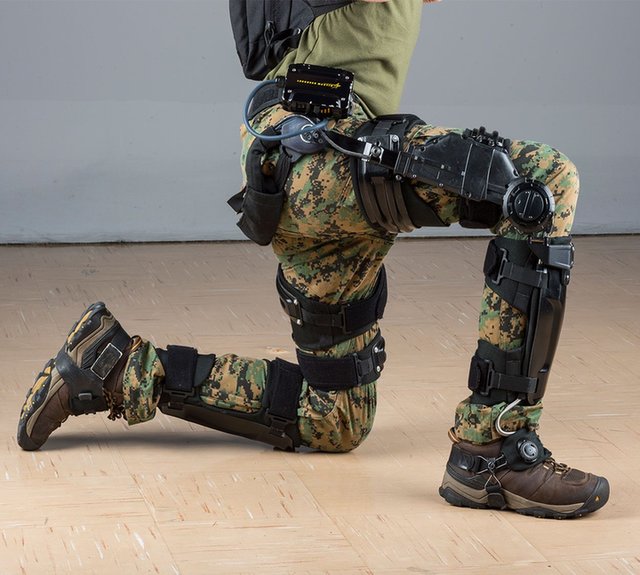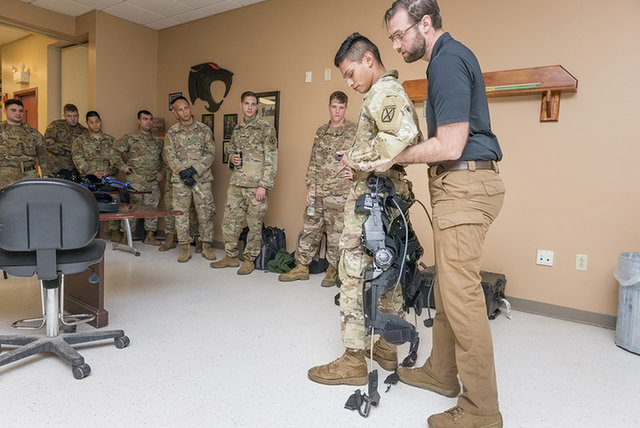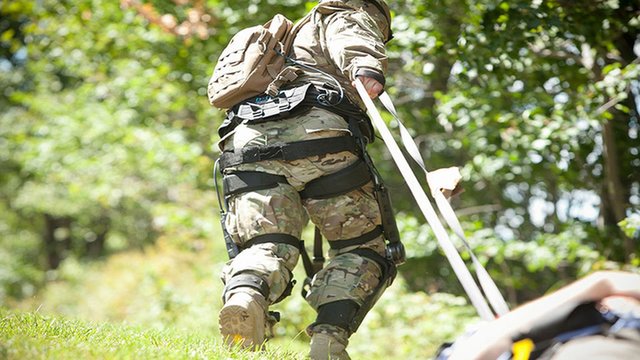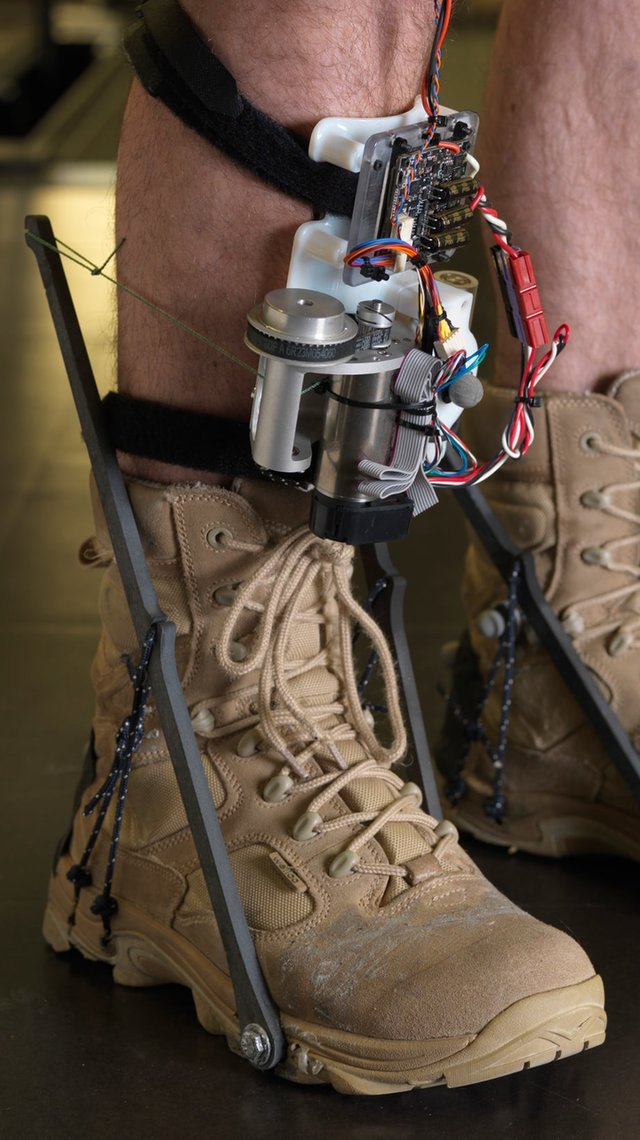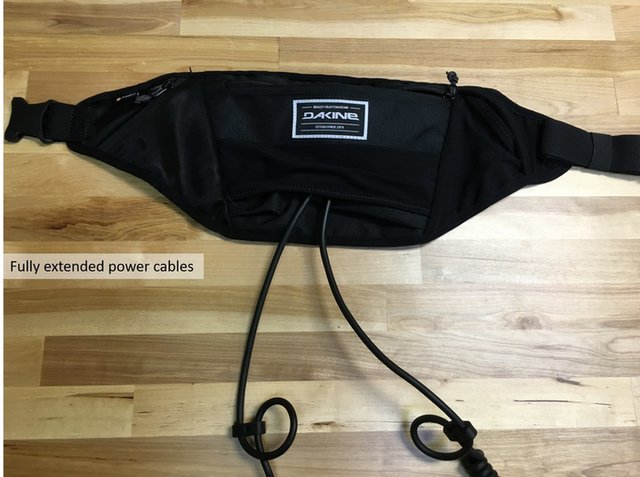land
Military exoskeletons: the next phase
The US Army is exploring commercial exoskeleton technologies for potential military applications, which can be used to support strength and endurance and protect soldiers from strain injury. Talal Husseini reviews the US Army Soldier Center’s requirements and takes a look at the companies leading the research and development of exoskeletons.

// Lockheed Martin’s HULC exoskeleton. Image: Lockheed Martin
Exoskeletons have the potential to improve the current physical capabilities of a warfighter, allowing them to run faster, lift heavier objects and relieve strain on the body during physically demanding operations.
The US Army Natick Soldier Research, Development and Engineering Center (NSRDEC/Soldier Center) is currently exploring how commercially developed exoskeletons could be used for military purposes. To this end, the Soldier Center has initiated a 48-month long other transaction agreement (OTA) worth $6.9m in total, in order to develop enough exoskeleton systems to conduct a comprehensive operational evaluation.
"As we explore the more mature exoskeleton options available to us and engage users, the more we learn about where the possible value of these systems is to army operations,” said David Audet, chief of the mission equipment and systems branch in the soldier performance optimisation directorate at the Soldier Center.
"Before the army can consider investing in any development above what industry has done on their own, we need to make sure that users are on board with human augmentation concepts and that the systems are worth investing in.”
Lockheed Martin’s Onyx
The biggest defence firm involved in the project is Lockheed Martin. Of the Soldier Center’s $6.9m budget, around $680,000 has been put aside for Lockheed Martin’s OTA for the Onyx lower-body exoskeleton suit, which won a Popular Science award in 2018. It has performed well in initial testing, but has yet to be put through more rigorous operational exercise.
Lockheed Martin Missiles and Fire Control exoskeleton technologies programme manager Keith Maxwell said: “Innovative human/machine technologies like ONYX can improve human performance, decrease injury and reduce fatigue to help soldiers accomplish physically demanding tasks.”
The Onyx system combines mechanical knee actuators with multiple sensors and artificial intelligence software to improve strength and endurance. Currently, the advised weight of a US soldier’s backpack is 50lbs, while in practice, kits can weight up to 140lbs when including body armour, night vision goggles and radio systems.
Therefore, any relief that the exoskeleton can provide will very appealing to today’s warfighters.
Lockheed Martin’s ONYX exoskeleton. Images: Lockheed Martin
Dephy’s Exo-boot
Another company involved in the exoskeleton programme is US tech start-up Dephy, founded in 2016. The company’s Exo-boot is designed not as a full-body concept, but to provide localised support for the foot and ankle.
Dephy’s co-founders researched initial designs for the ankle exoskeleton at the Massachusetts Institute of Technology in collaboration with the US Army. While Dephy’s design is under consideration for evaluation in the second half of 2019, some members of the US Army have already tested the exoskeleton at the Soldier Center.
The Exo-boot uses flexible, scalable electronics architecture, or FlexSEA technology, which aims to speed up and simplify the electronics behind wearable robotics designs. The FlexSEA system helps with motion control; includes tools for data acquisition, and provides the networking infrastructure for multi-axis and multi-joint exoskeletons.
Ideally, the army is looking for exoskeletons with full-body capabilities. However, the Soldier Center is considering the Exo-boot because it is a mature piece of equipment that, if successful, could be integrated into army operations more quickly than a full-body suit in its conceptual stage.
"Under ideal conditions, we would favour a full development effort," said Audet. "However, given the push for rapid transition and innovation, we can save the army a lot of time and money by identifying and vetting mature technologies, consistent with the vision of the Army Futures Command.”
Dephy’s Exoiboot. Images: Dephy
Other exoskeleton designs
Aside from these two designs currently involved in the Soldier Center evaluation, a number of other exoskeleton technologies in development by various private sector companies could also have potential for future military applications. Here we take a look at some of them.
XOS2 by Raytheon/Sarcos
The XOS2 uses high-pressure hydraulics, allowing the user to lift masses at a ratio of 17:1. Wearers are given the strength to lift 200lb objects for long periods of time and punch through three inches of wood. The design is also much more agile than the previous generation, giving the user abilities such as walking, running, climbing stairs and kicking a football. Image: RobotShop
HULC by EKSO/Lockheed Martin
Another design from Lockheed Martin, the Human Universal Load Carrier (HULC) also allows weights of 200lbs to be carried without strain on the wearer. Soldiers can move at a maximum speed of 11km/h over a long duration and up to 16km/h burst speed. The suit can be removed and packed in less than 30 seconds. It also has attachments such as armour, heating and cooling systems, and sensors. Image: Lockheed Martin
TALOS suit by USSOCOM
The US Special Operations Command presented its TALOS suit concept in 2013, but latest field testing was delayed last year and reports are now suggesting the programme has been terminated due to lack of funding and issues with powering the 600lb-700lb suit. SOCOM designed the suit to increase strength and mobility while carrying heavy payloads in dynamic environments. The TALOS design promised to increase survivability through anti-ballistic full-body armour and visual augmentation, and offer a high level of situational awareness via multiple sensors by giving the user access to next-gen displays, and communicative functions. Image: Gil Limonchik
Wyss Exosuit by Wyss Institute/DARPA
The Wyss Exosuit, developed by the Wyss Institute under DARPA’s Warrior Web programme, is a multi-joint soft exosuit made of textile components adding power at the waist, hips, thighs and calves. Unlike the hard exosuit designs, the Wyss’s lightweight design provides minimal restriction to motion and its system can automatically determine how much support it needs to provide a specific soldier based on their individual gait mechanics. Image: US Army
Operational Exoskeleton (OX) by Australia’s DSTO
The Australian Defence Science and Technology Organisation’s Operational Exoskeleton (OX) is a passive, soft exosuit design with the specific purpose of decreasing the strain on dismounted infantry. The OX uses two Bowden cables, which are commonly used for throttle control for light aircraft and in bicycle breaks, to redirect weight from the soldier’s 85kg backpack directly into the ground. At 3kg, the OX is much lighter than the HULC or the XOS2, however the Bowden cables will still provide some resistance to leg movement due to their stiff properties. Image: Commonwealth of Australia - Department of Defence
